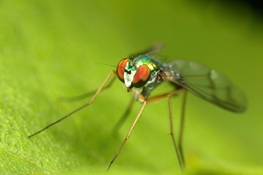Hi Phototrio!
Can I have some help figuring out what's going wrong with either with my camera system or my understanding of my camera system?
I have a Canon 7D mark II, 100mm EF F2.8 L macro lens, two EF-25 II extension tubes, Godox MF12 macro flash, and a Godox XProC flash controller.
Manual ISO/sometimes Auto ISO, eTTL II, evaluative metering, manual mode, 1/250 sec shutter, f10, no exposure compensation.
This system worked fine for about year, and then something changed.
The problem is that exposure with flash is all over the place. I can turn the system on, it'll give me a few properly exposed images, but then it will decide that everything needs to be overexposed. I turn down the ISO, over exposed. Use exposure compenstaion on the flash with -0.3 stop, it will underexpose. Somtimes, it will decide to do the opposite and underexpose the image. I've even had one overexposed and one underexposed image consecutavely! I turn everything off and back on, and it will be OK for a few images again.
If I just turn off the flash off, the camera seems able to expose the image properly, but it still struggles with the low low light situations during the macro photography that I do.
I looked all over the interwebs trying to find an explanation or solution. I've reset both camera and flash to factory settings multiple times.
I might be open to buying a new camera or flash, but not both, and I am concerned that the problem won't be with the new thing and remain with the one that I didn't replace.
Any thoughts on what's happening?
Thanks!!
Can I have some help figuring out what's going wrong with either with my camera system or my understanding of my camera system?
I have a Canon 7D mark II, 100mm EF F2.8 L macro lens, two EF-25 II extension tubes, Godox MF12 macro flash, and a Godox XProC flash controller.
Manual ISO/sometimes Auto ISO, eTTL II, evaluative metering, manual mode, 1/250 sec shutter, f10, no exposure compensation.
This system worked fine for about year, and then something changed.
The problem is that exposure with flash is all over the place. I can turn the system on, it'll give me a few properly exposed images, but then it will decide that everything needs to be overexposed. I turn down the ISO, over exposed. Use exposure compenstaion on the flash with -0.3 stop, it will underexpose. Somtimes, it will decide to do the opposite and underexpose the image. I've even had one overexposed and one underexposed image consecutavely! I turn everything off and back on, and it will be OK for a few images again.
If I just turn off the flash off, the camera seems able to expose the image properly, but it still struggles with the low low light situations during the macro photography that I do.
I looked all over the interwebs trying to find an explanation or solution. I've reset both camera and flash to factory settings multiple times.
I might be open to buying a new camera or flash, but not both, and I am concerned that the problem won't be with the new thing and remain with the one that I didn't replace.
Any thoughts on what's happening?
Thanks!!




